


Source: novel
The Devil to Pay |
| Film Bulletin by
Leyendecker, August 23. 1941 " 'ELLERY QUEEN AND THE PERFECT CRIME' FINE CAST WASTED IN MUDDLED FILM Latest in Larry Darmour's detective series is sadly misnamed, for the crime is far from perfect and the film is the least suspenseful of the series to date. In addition, a fine cast is wasted on a muddled script which gives none of the players an opportunity to really shine histrionically. James Hogan's direction errs in introducing too many extraneous characters and, despite the number of suspects, elements of surprise and suspense are lacking. The comedy moments, between young Queen and his officious secretary, Nikki Porter, are among the brightest spots in the picture. This will get below par returns where played. After a full reel of preliminaries, the story really gets under way when a treacherous financier (Douglas Dumbrille) is found murdered in his study. Among the suspects are his son (John Beal), who had quarreled with his father over his swindling business deals; a former partner (H. B. Warner), who had recently discovered that Dumbrille had made him penniless; a flighty sister-in-law (Spring Byington), who might inherit his money, and the lawyer who has been pretending a romantic interest in her. When Inspector Queen and his son, Ellery, take charge of the case they discover that Dumbrille had actually been killed by a poisoned arrow and the real killer comes as a total surprise to the audience — but makes a very weak denouement. Ralph Bellamy, Margaret Lindsay, Charley Grapewin and James Burke, the regulars who solve these screen mysteries, play their familiar roles acceptably. Best in the cast are John Beal, in a sincere portrayal of the unhappy son, and the veteran, H. B. Warner. Both Spring Byington and Linda Hayes are handicapped by James Hogan's indifferent direction." The Film Dialy "Reviews of the New Films" July 10. 1941 " 'QUEEN'' MYSTERY THRILLER PROVES GOOD HANDLING OF ROUTINE PLOT; OKAY FOR DUALS. Third of a series of 13 (sic) "Ellery Queens" Larry Darmour is releasing through Columbia, "And the Perfect Crime" is a good clean running mate for dual bills. An exceptionally good cast, a good yarn by Eric Taylor, and smart direction by James Hogan cinch the buy. Ralph Bellamy is a good choice for the title role and Margaret Lindsay is a fine foil. Charley Grapewin and James Burke, a comedy cop duo should be great favorites with the fans after a few of these pix are released. Word of mouth won't do this film any harm — and the unusually good cast should sell plenty of tickets from "lobbies" or newspaper ads. Ellery Queen (Ralph Bellamy) is going fishing with his father and Sergeant pal (James Burke) when a murder is committed involving his friends John Beal and H. B. Warner. Warner has been accused of murdering a business associate who swindled him in a power deal. After all the routine suspicions, opening curtains, screams and false clues, the murderer is uncovered and Bellamy goes fishing. DIRECTION, Fine. PHOTOGRAPHY, Good. " |
| Above: full set of eight lobby cards |
|
Ralph Bellamy makes the third of four appearances as "master
detective" Ellery Queen. The principal villain is crooked
stockbroker John Mathews, whose Wall Street manipulations render Ray Jarden penniless.
Mathews' chicanery seems particularly cold-blooded, inasmuch as his daughter Marian is engaged to Jarden's son Walter. When the latter disappears, Mathews asks Ellery
Queen to locate the young man. Shortly thereafter, one of the principal
characters is murdered, forcing Ellery to get his deductive skills into high gear-no small
task, since he's depicted in this film as a complete dunderhead. This is probably the best of the Columbia Queens, since it played fairly straight with the storyline of the novel, even while totally changing its setting and characters. Still too much Thin Manning, however, to satisfy mystery fans. As one review pointed out, this obviously wasn't the "perfect crime" since Ellery solved it. Nothing perfect at all in this entry about the murder of a shady stockbroker. The script was novelized and published (but not written by EQ). |
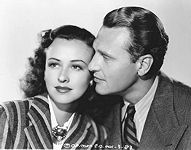 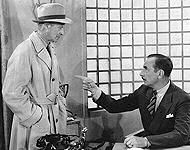 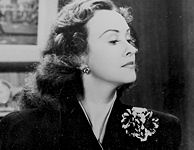 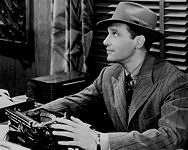 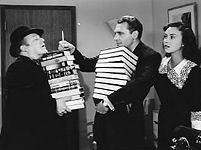  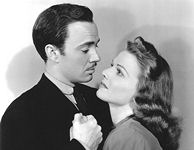 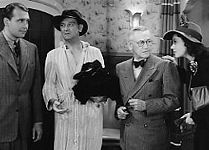 |
| Harrison's Reports July
26. 1941 "A routine murder mystery melodrama of program grade. Following the formula set for pictures of this type, the plot places several persons in a suspicious light, keeping one guessing as to the murderer's identity. The story is somewhat involved and since the characters are too talkative, the action slows up occasionally. There is a little comedy and a romance :— John Beal leaves home when he learned that his father (Douglas Dumbrille) had sold his stock in a power company short, thereby ruining all his friends who had invested in the company, including H. B. Warner and his daughter (Linda Hayes). Warner is shocked when he learns what Dumbrille had done, for he was under the impression that Dumbrille, too, had been ruined. Beal, who was in love with Miss Hayes, offers his help to Warner, but he refuses it. When Dumbrille is murdered, several persons are suspected: first Beal, then Spring Byington, the dead man's sister, and even Warner. But it develops that the murderer was Walter Kingsford, Warner's butler, because he, too, had lost his savings. With his name cleared, Beal is able to marry Miss Hayes. ... The murder makes it unsuitable for children." Motion Picture Daily by Roscoe Williams - July 10. 1941 "Producer Larry Darmour's third Ellery Queen murder mystery gives showmen a hatful of box-office names for his marquee — Ralph Bellamy, Margaret Lindsay, Charley Grapewin, Spring Byington, H. B. Warner, James Burke, Douglas Dumbrille, John Beal, Linda Hayes, Sidney Blackmer and Walter Kingsford, to list the tops. In this particular, the film is the best of the three. Conversely, this production packs a lesser total value as audience entertainment, floundering somewhat in mid-picture when attempt to cast suspicion on all members of the cast over-reaches, and fizzling, so to speak, at the conclusion, when the detective expected by Ellery Queen fans to solve the mystery in a surprising fashion is just one of those present in a general unraveling which leaves far too much unexplained. The story concerns the murder of a capitalist, whose operations have brought financial ruin to friends as well as clients, and circumstances, clues and suspicions which activate all members of the cast in their efforts to determine the murderer. Suspicion attaches so convincingly to so many of them that it is not satisfactorily disarmed by the solution which the finale supplies. Showmen who stress the player names in exploitation are likely to derive best results. Direction is by James Hogan." |
|
|
|
Other articles on this movie |
|
Copyright © MCMXCIX-MMXXIII Ellery Queen, a website on deduction. All rights reserved. |